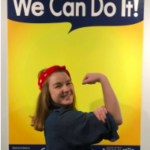On the weekend of October 8 at UNC-Chapel Hill, one student died by suicide and one student attempted suicide. In this semester alone, three students have died by suicide. This can’t keep happening. Our loved ones need us to act to improve suicide prevention efforts — and not just by throwing out the hotline.
We also need to pay attention to the groups who struggle with suicide and suicidal ideation at higher rates: people who experience discrimination because of their identity.
Suicide among Black teen girls is on the rise. Native Americans and LGBTQ people are more likely than their counterparts to attempt or die by suicide.
Discrimination is a huge factor. Suicide prevention needs to focus on lessening the barriers faced by these marginalized groups.
While doing so isn’t a cure, it’s a start. “The recognition that delivery of specialized mental health services cannot undo or overcome the impact of systemic inequities,” said Jasleen Chhatwal, MBBS, MD, FAPA, the Chief Medical Officer at Sierra Tucson. “[But], application of a social justice framework to mental health and suicide prevention is paramount if we are able to improve health outcomes for all peoples.”
She explained while structural change takes time, we can practice proportionate universalism, or everyone helping in ways that are proportionate to the needs of each population.
Identify intersectional risks
First, we have to know what we’re dealing with. Who’s affected most, and in what areas?
“For example, the suicide risk in youth is elevated, and we are aware that risk within Black and LGBTQI youth is even higher due to cumulative impacts of marginalization,” Dr. Chhatwal said.
AKA, we need to make sure we focus on people who have multiple marginalized identities. To start educating yourself on each identity, you can check out the infographics on psychiatry.org.
Consider systemic prevention opportunities
Then, think about suicide prevention as it pertains to that form of oppression. This can entail trainings and education.
“[Encourage] psychoeducation, community outreach, and training faith and local leaders to provide opportunities for social connectedness and timely interventions that may provide added support,” she said.
For example, Embody Carolina is a social justice-based eating disorder organization at UNC-Chapel Hill. They provide trainings to local leaders, teachers, parents, and other groups who want to learn how to compassionately and effectively support people with eating disorders. Since eating disorders, such as anorexia, have the second-highest mortality rate, partially from suicide, this is an important training to consider.
For suicide-specific education, however, you can check out the American Foundation for Suicide Prevention’s More Than Sad materials and Talk Saves Lives program. Mental Health America of Central Carolinas also offers virtual mental health first aid trainings you can sign up for or have hosted for a group you’re a part of.
Provide regular clinical outreach
Mental health professionals especially can provide clinical outreach to people in marginalized groups. “[This can be] in the form of frequent mental health and suicide screenings, with the goal of early identification and referral to treatment,” Dr. Chhatwal said.
In addition, mental health providers can give sliding scale rates to people in these groups, since finances can also be a barrier to treatment.
Find ways to access and support people in remote areas
Not everyone lives near therapy offices, but that doesn’t mean they don’t need help. “Improve access to specialized mental health care that takes into account the individuals’ culture and is provided close to or embedded within work, school, or places of worship,” she said. “Telehealth platforms can also be used for remote or difficult-to-access areas.”
This can look like mental health professionals being aware of their location and trying to locate near bus lines. It can also look like trained non-professionals hosting support groups and psychoeducation in rural areas.
Ensure mental health providers are diverse
It doesn’t matter where you work — mental health care is important everywhere, and diverse professionals are needed. Make sure the career psychologists, counselors, or other providers at your workplace are not only of one race, gender, or sexual orientation. You can be mindful of who you hire or advocate to hire an extra person who’s needed.
“Involve mental health providers who are representative of the persons receiving care, as this can build trust and ensure distress signals are better understood,” Dr. Chhatwal said.
Educate staff and volunteers on identity-based barriers and marginalization
Whether you volunteer at a suicide hotline or have a corporate job, advocate for staff-wide social justice education. “Continue to educate staff and volunteers on social injustice and intersectional challenges and risks, improving sensitization for at-risk populations and enhance effectiveness in addressing deaths of despair,” she said.
These tips are only a start, but they’re what we desperately need.
 Ashley Broadwater is a recent graduate of UNC-Chapel Hill, where she studied Public Relations in the Hussman School of Journalism and Media. She’s passionate about mental health, body positivity, relationships, Halloween, and Dad jokes.
Ashley Broadwater is a recent graduate of UNC-Chapel Hill, where she studied Public Relations in the Hussman School of Journalism and Media. She’s passionate about mental health, body positivity, relationships, Halloween, and Dad jokes.


There are no comments
Add yours